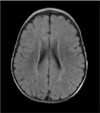Loss of function mutation in glutamic pyruvate transaminase 2 (GPT2) causes developmental encephalopathy
- PMID: 25758935
- PMCID: PMC4919120
- DOI: 10.1007/s10545-015-9824-x
Loss of function mutation in glutamic pyruvate transaminase 2 (GPT2) causes developmental encephalopathy
Abstract
Intellectual disability is genetically heterogeneous, and it is likely that many of the responsible genes have not yet been identified. We describe three siblings with isolated, severe developmental encephalopathy. After extensive uninformative genetic and metabolic testing, whole exome sequencing identified a homozygous novel variant in glutamic pyruvate transaminase 2 (GPT2) or alanine transaminase 2 (ALT2), c.459 C > G p.Ser153Arg that segregated with developmental encephalopathy in the family. This variant was predicted to be damaging by all in silico prediction algorithms. GPT2 is the gene encoding ALT2 which is responsible for the reversible transamination of alanine and 2-oxoglutarate to form pyruvate and glutamate. GPT2 is expressed in brain and is in the pathway to generate glutamate, an excitatory neurotransmitter. Functional assays of recombinant wild-type and mutant ALT2 proteins demonstrated the p.Ser153Arg mutation resulted in a severe loss of enzymatic function. We suggest that recessively inherited loss of function GPT2 mutations are a novel cause of intellectual disability.
Figures




References
Publication types
MeSH terms
Substances
Grants and funding
LinkOut - more resources
Full Text Sources
Other Literature Sources
Medical
Molecular Biology Databases

